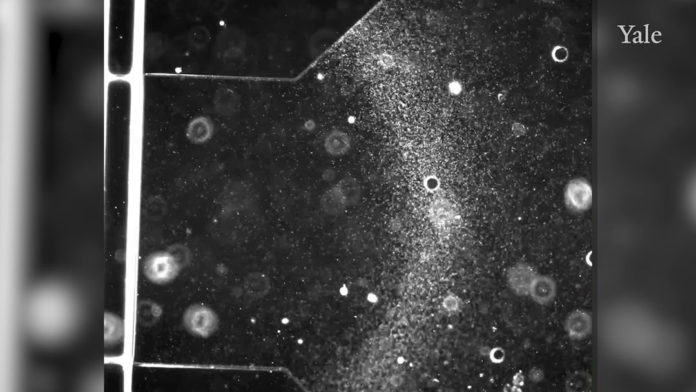Varieties of bacteria guarantee the capacity to survive arbitrary changes in the earth. Yet, when a bacterial band starts to relocate, individual cell contrasts display a problem with slowpokes.
Now, a new study by Yale scientists suggests a natural sorting mechanism that allows colonies of E. coli to preserve individual differences yet move in concert while migrating over long distances.
Scientists tracked the groups of E. coli cells as they chase food that recedes as they consume it. At the head of the group, food is plentiful. Behind it, nothing is left. However, during the process of chemotaxis, cells detect this difference and move accordingly, thus resulting in collective migration.
At the point when scientists diminished the accessible food, slow-moving cells could keep up with the group.
Senior author Thierry Emonet said, “The minimum speed required to stay with the group increases. This is exactly what we see in human society during times of want — the weakest have a hard time keeping up with a migrating group.
Although, not all the cells remain. The fast cells swam to the front of the cell’s group. The slowpokes swam behind them, where contrasts in sustenance plenitude were clearer. Coordinating of swimming capacity with the quality of the signs enabled the assorted cells to relocate together at a similar speed.
The perception not only has applications for the investigation of pathologies like malignancy or diseases, said the analysts, but is an update about the sensitive adjustment in all types of life between protecting assorted variety and the requirement for deliberate activity.
Emonet said, “If individual differences are sacrificed, then the colony might not survive in new circumstances. But if unchecked individualism dominates, critical collective behavior necessary for survival breaks down.”
The research was primarily funded by The National Institute of General Medical Sciences and by the Allen Distinguished Investigator Program through The Paul G. Allen Frontiers Group. They reported their findings June 5 in the journal Nature Communications.
